Creating a custom sports bag? Here’s a quick overview of how the process works from start to finish:
- Planning & Design: Define your bag’s purpose, choose materials (like polyester or nylon), and finalize branding details.
- Sample Creation: Make prototypes, test durability, and refine designs.
- Production: Assemble the bags with attention to stitching, hardware, and customization.
- Quality Control: Inspect every detail – seams, zippers, and overall structure.
- Delivery: Package securely, ship with proper documentation, and provide after-sales support.
How a Backpack is Made: Every Step on the Production Line
Step 1: Planning and Design
The planning and design phase transforms client requirements into actionable production guidelines. This stage lays the groundwork for successful custom bag manufacturing by focusing on thorough assessment and detailed documentation.
Client Needs Assessment
Understanding the client’s needs involves analyzing the market, usage scenarios, and performance expectations. For sports bags, key factors include:
| Assessment Area | Key Considerations | Documentation Method |
|---|---|---|
| Usage Context | Sport type, environment, frequency | Client interviews |
| Technical Requirements | Size, load capacity, durability | Technical measurements |
| Brand Elements | Logo placement, color schemes, identity | Design brief |
| Market Position | Price point, competitor analysis, audience | Market research |
This process often involves creating a tech pack, which outlines design measurements, hardware, and material specifications.
Design Development
Using the needs assessment as a foundation, the design development phase translates client requirements into detailed technical specifications and visual designs. These define dimensions, layouts, and branding elements, ensuring the production team accurately captures the client’s vision.
Material and Component Selection
The choice of materials plays a major role in a bag’s durability, functionality, and overall user experience. For sports bags, the focus is on materials that balance performance with practicality:
| Material Type | Features | Best Use Case |
|---|---|---|
| Polyester | Retains color, easy to engrave | General sports bags |
| Nylon | Lightweight, flexible, waterproof | Outdoor activities |
| PU Leather | Affordable, water-resistant | Premium appearance |
High-quality components like YKK zippers and reinforced stitching enhance both performance and longevity. For bags designed to carry electronics, a polyester lining offers better water resistance compared to cotton alternatives.
Manufacturers are also responding to growing demand for eco-friendly options, offering materials like recycled polyester or organic cotton. These choices set a strong foundation for the prototyping and production stages.
Step 2: Sample Creation and Testing
Once the design specifications are finalized, the next step is turning those plans into prototypes. This stage ensures the final product meets all required standards and specifications before moving to mass production.
First Sample Production
At JUNYUAN BAGS, creating prototypes involves several key steps:
| Production Stage | Purpose | Quality Focus |
|---|---|---|
| Paper Modeling | Confirm dimensions | Structural integrity |
| Material Cutting | Test pattern accuracy | Material precision |
| Initial Assembly | Verify construction methods | Seam strength |
| Hardware Installation | Ensure proper fit of parts | Functionality testing |
A prototype fee is charged to cover the cost of pattern creation and sample production. This ensures the design specifications are executed with precision. Once the prototype is ready, it undergoes various performance tests to guarantee functionality and durability.
Performance Testing
Prototypes are subjected to detailed performance tests to ensure they are built to last. Key testing areas include:
| Test Type | Parameters | Industry Standard |
|---|---|---|
| Water Resistance | Exposure time and penetration | IPX rating |
| Strap Strength | Weight capacity and stress points | Load testing |
| Hardware Durability | Endurance cycles | Fatigue testing |
| Material Abrasion | Surface wear resistance | Martindale test |
Performance testing is a crucial part of product development, accounting for about 30% of global testing service revenue. These tests ensure the product can handle real-world conditions.
Design Approval
After testing, the design moves to the approval stage, where it is evaluated for readiness to enter mass production. As Sandeep Kashyap states:
"A well-structured design review process is essential, not an option".
The approval process includes several review stages:
| Review Stage | Participants | Focus Areas |
|---|---|---|
| Technical Review | Engineering team | Construction quality |
| Functional Assessment | Product specialists | Performance metrics |
| Client Evaluation | Stakeholders | Design alignment |
| Final Documentation | Project managers | Production specifications |
Feedback is gathered through a centralized platform, allowing all stakeholders to contribute to the final decision. This organized approach not only ensures quality but also smooths the transition to full-scale production.
sbb-itb-1e6451b
Step 3: Production Steps
Once the design is approved and sample testing is successful, the production phase begins. This is where the approved designs are transformed into finished products through carefully managed steps focused on precision and quality.
Material Preparation
Each material is handled with care to maintain its quality:
| Material Type | Preparation Method | Key Quality Focus |
|---|---|---|
| Polyester | Laser cutting | Smooth edges, heat-sealed |
| Nylon | CNC cutting | Reinforced stress points |
| PVC Tarpaulin | Die cutting | Waterproof seam allowance |
| Canvas | Manual cutting | Proper grain alignment |
Materials are measured and cut to match the approved patterns. For PVC tarpaulin, special attention is given to seam allowances to ensure water resistance.
Construction and Customization
With materials ready, the assembly process begins. Building on the prototype testing, every step of assembly is closely monitored. Depending on the complexity of the design and order size, this stage can take 4–8 weeks. Key stages include:
| Construction Phase | Focus Area | Customization Options |
|---|---|---|
| Panel Assembly | Seam strength | Color matching |
| Hardware Installation | Durability testing | Various metal finishes |
| Reinforcement | Stress stability | Extra padding |
| Branding Application | Logo placement | Embroidery or printing options |
Skilled workers assemble the components into the final product, adhering to strict quality standards. Intermediate checks are performed during assembly to catch and correct any issues, ensuring the product matches the approved prototype.
Production Quality Checks
Quality control combines advanced technology with manual inspections to ensure uniformity and reliability throughout the production process:
| Check Point | Inspection Method | Quality Standards |
|---|---|---|
| Material Cutting | Laser precision | Accurate dimensions |
| Seam Construction | Stitch analysis | Consistent and strong stitching |
| Hardware Assembly | Pull testing | Verified durability |
| Final Structure | Multi-point review | Uniform shape and structural integrity |
This mix of technology and skilled craftsmanship ensures every custom design is executed with precision, resulting in a high-quality product at every stage.
Step 4: Quality Control and Packaging
Final Product Inspection
After production is completed, every custom bag is thoroughly inspected for both appearance and functionality. These checks ensure the bags meet the required standards.
| Inspection Area | Check Points | Quality Standards |
|---|---|---|
| Visual Assessment | Color accuracy, logo placement | Matches the approved sample |
| Construction | Stitching alignment, seam integrity | No loose threads or gaps |
| Hardware | Zippers, buckles, straps | Smooth operation, securely attached |
| Material Quality | Surface finish, reinforcements | Free of defects or imperfections |
The quality team at Osgoodway performs random sampling and conducts stress tests on zippers and durability checks to maintain consistent quality across all products.
Once a product passes this final inspection, it is carefully packaged to prepare it for shipping.
Packaging Methods
Packaging plays a dual role: protecting custom sports bags during transit and presenting them in a way that reflects the brand.
| Package Type | Features | Benefits |
|---|---|---|
| Corrugated Boxes | Double-wall construction | Provides strong protection during shipping |
| Kraft Paper Boxes | Made from eco-friendly materials | A sustainable shipping option |
| Display Windows | Clear panel option | Allows for visual product presentation |
| Custom Sports Boxes | Brand-specific designs | Creates a memorable unboxing experience |
Basic cardboard packaging starts at an affordable $0.1 per unit. For premium collections, upgraded packaging options with sports-themed designs and high-quality printing are available.
Once the products are securely packaged, the next step is preparing the necessary shipping documentation.
Shipping Documentation
Accurate shipping documents are essential for smooth delivery and customs clearance. Each shipment includes all required paperwork.
| Document Type | Purpose | Required For |
|---|---|---|
| Commercial Invoice | Proof of sale | All shipments |
| Packing List | Itemized contents | All shipments |
| Certificate of Origin | Verification of manufacturing | International orders |
| Bill of Lading | Transportation contract | Domestic/International shipments |
"Shipping documents, as the name suggests, are the documents necessary to transport an item from one location to another." – Meredith Flora, Content Marketing Specialist at ShipBob
For international orders, additional documents may be required, such as:
- Proforma Invoice for confirming the initial order
- Export Packing List with detailed item descriptions
- Certificates of Free Sale when requested by the destination country
- Air Waybill for shipments sent via air freight
Each document is carefully reviewed to avoid customs issues and ensure the shipment arrives on time.
Step 5: Shipping and Follow-up
Shipping Management
Managing shipping effectively ensures your custom bags arrive on time and in perfect condition. Shipping times depend on the destination and method – international orders take longer, while expedited options are available for urgent needs. Bulk orders are carefully packed in sturdy corrugated cardboard boxes to protect them during transit. Plus, real-time tracking keeps you informed every step of the way.
Order Status Updates
To keep you in the loop, we provide clear updates via email notifications and an online portal. These updates include real-time shipment tracking, customs clearance details for international orders, and estimated delivery windows. Combined with our proactive after-sales support, we ensure a smooth process from production to delivery.
After-Sales Service
Once your bags are delivered, inspect them thoroughly to confirm their quality. If you spot any issues, document them with both overall and detailed photos. Replacement parts are typically sent within 15–25 days, and our after-sales team will stay in touch until every problem is resolved.
Conclusion: Next Steps for Your Custom Bag
This guide connects the production process with actionable steps to kick off your custom bag project. Success starts with careful planning and clearly defined specifications – think dimensions, materials, target audience, and must-have features. A well-prepared brief should detail your preferred materials, budget, and expected sales volumes to streamline communication and production.
"Communication with your chosen bag manufacturer is paramount. You need to articulate your bag manufacturing objectives, your ideas, expectations, and crucial market research findings".
To ensure your vision aligns with the manufacturer’s capabilities, provide clear technical drawings, material samples, and reference images from the start.
Steps to get started:
- Define your bag’s main purpose and user needs.
- Research competitor pricing and market trends.
- Create detailed technical drawings with accurate measurements.
- Collect material preferences and samples.
- Establish realistic timelines and production quantities.
Following these steps will help guide your project from concept to completion, ensuring the final product meets your expectations for quality and design.
Work closely with your manufacturer for material selection and design refinements. As industry expert cdmiceli emphasizes:
"Communication is key throughout the process, and working with a reputable manufacturer will ensure a high-quality result".
A strong partnership with a reliable manufacturer, built on clear goals and open dialogue, is essential to turning your custom bag idea into a polished, finished product.




 Mobile/What's App/Wechat
Mobile/What's App/Wechat E-Mail
E-Mail ADD
ADD




